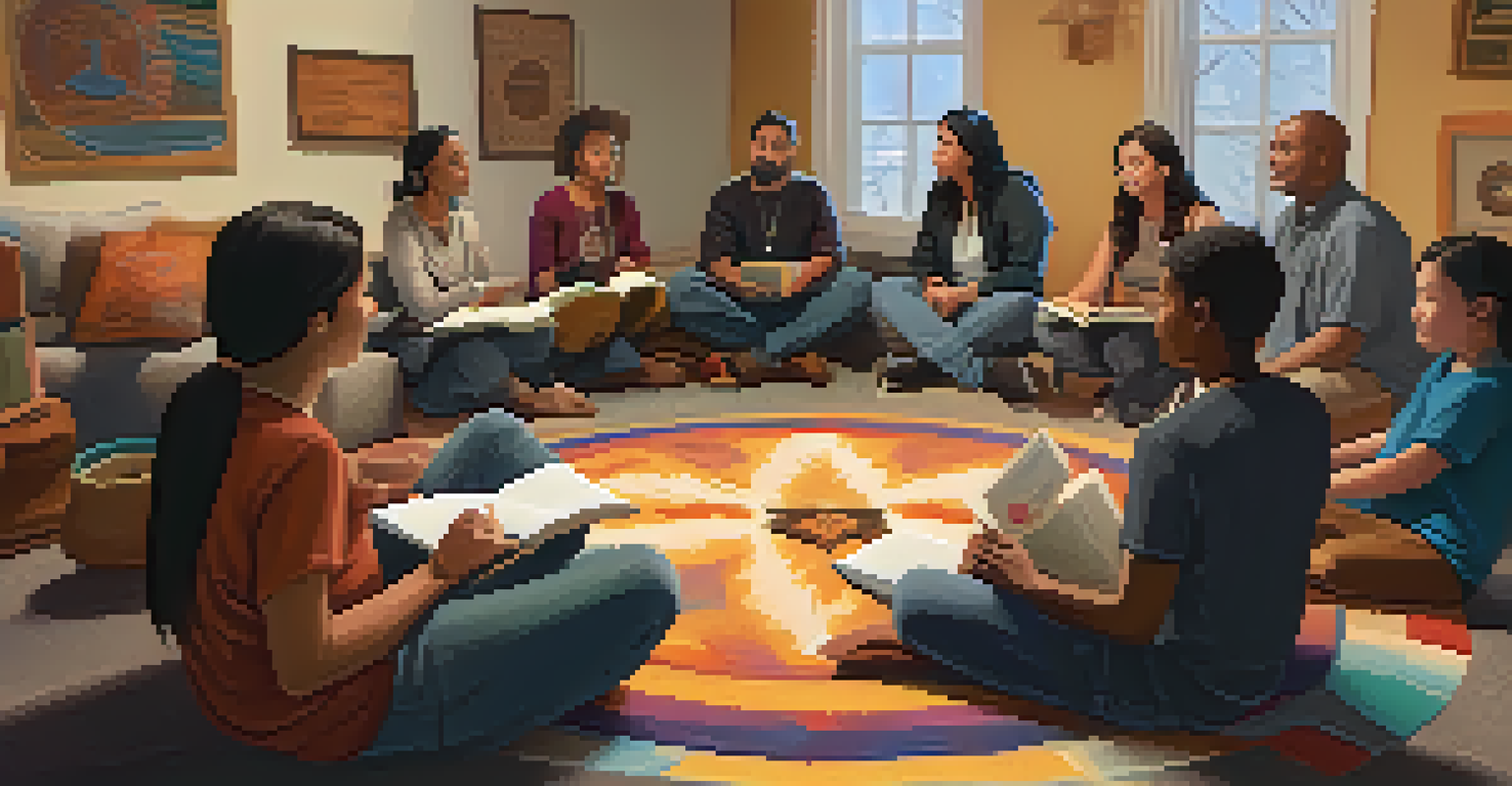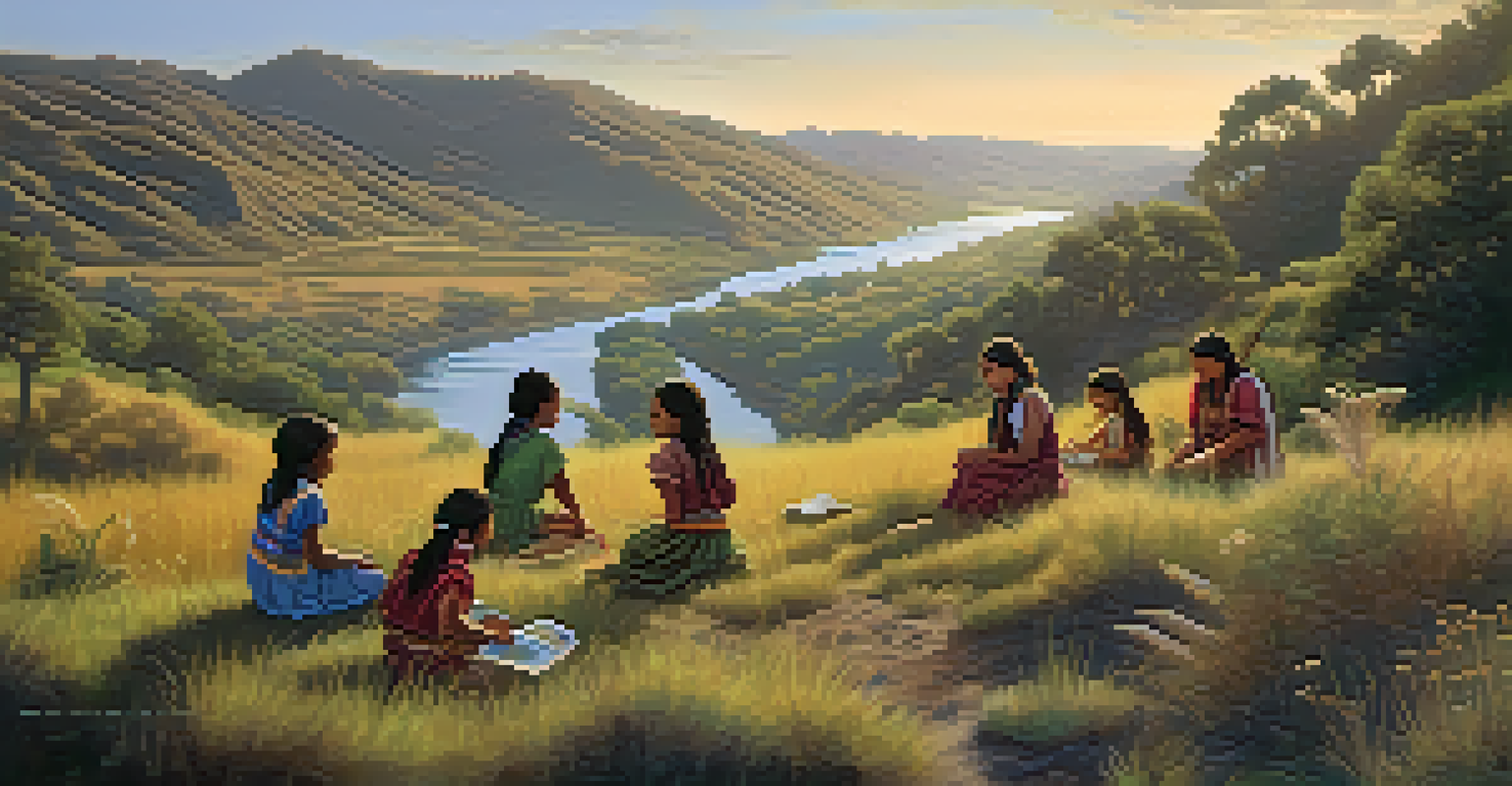California Native American Languages: A Rich Tapestry

California's Linguistic Diversity: A Brief Overview
California is home to a remarkable array of Native American languages, reflecting the rich tapestry of cultures that have existed here for thousands of years. With more than 70 distinct languages, these linguistic groups vary greatly, showcasing the diversity of the tribes that speak them. From the Northern Californian languages like Yurok to the Southern Californian languages such as Kumeyaay, each language offers a unique window into its speakers' way of life and worldview.
A language is something infinitely greater than grammar and philology. It is the poetic testament of the genius of a race and the culture of a nation.
The languages are not just means of communication; they embody the histories, traditions, and philosophies of the tribes. Each language carries its own unique sounds, structures, and vocabulary, often influenced by the region's geography and culture. This linguistic diversity is a testament to the resilience and adaptability of California's Indigenous peoples, who have maintained their languages despite centuries of external pressures and challenges.
Understanding California's Native American languages is crucial for appreciating the state's cultural heritage. As these languages are interwoven with the spirituality and traditions of the tribes, they provide insight into the relationship these communities have with the land and their ancestors. Preserving these languages is not just about keeping words alive; it is about honoring the stories and identities of the people who speak them.
The Importance of Language in Cultural Identity
Language plays a vital role in shaping cultural identity, especially for Native American communities in California. It serves as a vessel for transmitting knowledge, values, and traditions from one generation to the next. When a language is spoken, it connects individuals to their ancestors and the collective memory of their people, fostering a sense of belonging and pride.

For many tribes, the revitalization of their languages is a key component of cultural resurgence. Efforts to teach younger generations their ancestral languages help to strengthen ties within the community and reinforce cultural practices. Language classes, immersion programs, and community workshops are vital tools in this revitalization movement, ensuring that the language lives on.
Diverse Native Languages of California
California is home to over 70 distinct Native American languages, each reflecting the unique cultures and histories of the tribes that speak them.
Moreover, language is intertwined with the land and the environment, often containing specific terms that describe local flora, fauna, and geographical features. This connection emphasizes the deep relationship between the speakers and their surroundings, highlighting how language can enhance our understanding of ecological knowledge and environmental stewardship.
Challenges Facing California Native American Languages
Despite their rich heritage, many California Native American languages face significant challenges. The impacts of colonization, forced assimilation, and the removal of Indigenous peoples from their lands have led to a decline in speakers and, in some cases, the near extinction of languages. As older generations pass away, the urgency to revitalize these languages becomes more pronounced.
Language is the road map of a culture. It tells you where its people come from and where they are going.
Another challenge is the lack of resources and support for language preservation initiatives. While some tribes have developed programs to teach their languages, funding and access to educational materials can be limited. This lack of support can hinder the efforts of dedicated community members striving to keep their languages alive.
Additionally, modern technology and societal shifts present both challenges and opportunities. While digital platforms can facilitate language learning and sharing, the prevalence of dominant languages can overshadow Indigenous languages, making it harder for them to thrive. Balancing tradition with innovation is crucial for the survival of these languages.
Successful Revitalization Efforts Across California
In response to the challenges, many tribes in California have embarked on successful revitalization efforts to preserve their languages. Language nests, where young children are immersed in their ancestral languages, have shown great promise in fostering fluency among the youngest generations. These programs are often run by fluent speakers who share their knowledge and passion for their language.
Community-driven initiatives have also played a pivotal role in revitalization. Events such as language camps, storytelling nights, and cultural festivals create spaces for language use in a fun and engaging way. By celebrating their languages publicly, tribes not only strengthen community bonds but also raise awareness about their linguistic heritage.
Language Revitalization Efforts
Tribes are actively working to revive their languages through community initiatives, educational programs, and collaborations with academic institutions.
Moreover, collaboration between tribes and academic institutions has led to innovative research and documentation projects. Linguists and tribal members work together to create dictionaries, grammar guides, and educational materials, making the languages more accessible to learners. These partnerships are vital for ensuring that the knowledge of California Native American languages continues to grow and evolve.
The Role of Technology in Language Preservation
Technology has become an essential tool in the effort to preserve California Native American languages. Mobile apps, online courses, and social media platforms provide innovative ways for speakers and learners to connect with their languages. These resources make it easier for people, especially younger generations, to engage with their linguistic heritage in familiar and accessible formats.
Online dictionaries and audio recordings allow for the documentation of languages that may be at risk of disappearing. By capturing the sounds and structures of these languages, technology helps to create a lasting record that can be utilized for teaching and learning. This digital preservation ensures that the languages can be passed down even if spoken fluency diminishes.
Additionally, social media serves as a platform for language promotion and community building. Many tribes share language lessons, cultural stories, and events through these channels, reaching a wider audience and fostering interest in their languages. Technology, when used thoughtfully, can bridge the gap between tradition and modernity, enhancing language preservation efforts.
Celebrating Language Through Cultural Events
Cultural events play a significant role in celebrating and promoting California Native American languages. Powwows, festivals, and community gatherings often feature language use as a central element, showcasing traditional songs, storytelling, and dances. These events not only provide opportunities for language speakers to share their knowledge but also encourage community members to learn and participate.
By incorporating language into these cultural expressions, tribes reaffirm the importance of their linguistic heritage. It becomes a living part of their identity, allowing younger generations to see the value and beauty of their languages. Attendees gain firsthand experience of how language shapes cultural practices and fosters a sense of unity.
Technology Aids Language Preservation
Digital tools like mobile apps and social media are crucial for preserving California Native American languages, making them more accessible to younger generations.
Moreover, these events serve as educational opportunities for both Indigenous and non-Indigenous attendees. They can learn about the history, struggles, and triumphs of California Native American communities, fostering greater understanding and respect. Celebrating language through cultural events is essential for strengthening community ties and ensuring that these rich traditions continue to thrive.
The Future of California Native American Languages
Looking ahead, the future of California Native American languages remains hopeful yet complex. As more tribes prioritize language revitalization, there is a growing recognition of the importance of these languages for cultural identity and community resilience. Collaborative efforts between tribes, educators, and linguists are paving the way for sustainable language programs.
However, ongoing challenges require attention and support from both Indigenous communities and broader society. Increased funding, resources, and advocacy are crucial for addressing the historical injustices that have impacted language survival. By creating supportive environments for language learning and use, we can contribute to their revitalization efforts.

Ultimately, the survival of California Native American languages hinges on a collective commitment to honoring and nurturing these rich linguistic heritages. With the passion and determination of communities, there is hope that these languages will not only survive but thrive, continuing to tell the stories of their people for generations to come.